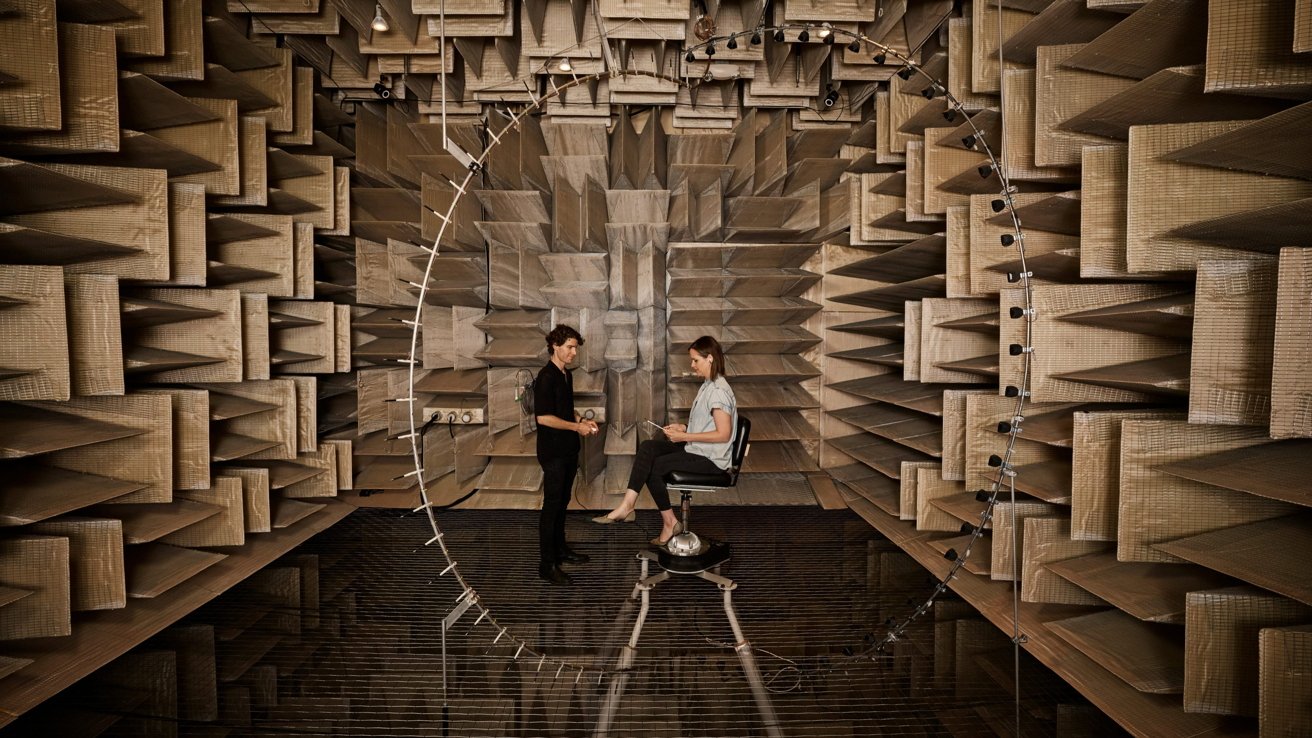Apple aims to make hearing health more accessible with AirPods Pro 2, introducing a tool for protecting, testing, and enhancing hearing. The company reveals the development process behind these features.
The company is taking a significant leap in personal health tech with the launch of its comprehensive hearing health solution, now officially announced for the AirPods Pro 2. The news follows earlier coverage on October 22, which gave a sneak peek into Apple’s state-of-the-art Audio Lab in Cupertino.
With the official release, Apple confirms that its new features — Hearing Protection, at-home Hearing Test, and clinical-grade Hearing Aid functionality — are now available through a software update. Apple introduces an end-to-end hearing health experience, marking the first time a consumer tech company has done so to address a growing global health concern.
Helping hearing health
The urgent need for accessible hearing health solutions has never been more pressing. According to the World Health Organization, approximately 1.5 billion people worldwide experience hearing loss.
Apple’s largest anechoic chamber, Longwave, has a specially designed setup to assess how sound behaves when it hits the human body. Image credit: Apple
Despite its prevalence, hearing loss often goes unnoticed, particularly among younger individuals frequently exposed to high noise in environments like concerts and nightclubs. Apple’s latest features aim to address this issue by integrating proactive solutions into everyday devices, making hearing health more approachable and routine.
AirPods Pro 2 offers a comprehensive approach to hearing health. With Hearing Protection, the earbuds monitor surrounding noise levels and promptly alert users when they encounter potentially harmful sound intensities, providing real-time protection for their ears.
The at-home Hearing Test allows users to conduct a self-assessment of their hearing without the need to visit a clinician, offering a convenient and accessible option for users to monitor their hearing health. AirPods’ Hearing Aid functionality built-in microphones to amplify and clarify speech, making everyday conversations more straightforward to understand for those with mild to moderate hearing loss.
Apple’s Audio Lab in Cupertino, California, is at the heart of the development of these features as a state-of-the-art facility. It houses advanced equipment, including anechoic chambers and sound simulation environments, which enable engineers to replicate real-world acoustic conditions.
The design team conducted extensive research to simplify the Hearing Test on AirPods Pro 2, identifying areas to streamline the test for home users. Image credit: Apple
The company’s meticulous setup allowed it to fine-tune features like Conversation Boost and Transparency mode in noisy environments. The lab simulated diverse soundscapes to test and refine these groundbreaking features.
To achieve this level of innovation, they required collaboration across multiple Apple teams, including hardware and software engineering, health, accessibility, and design. The resulting interface is intuitive and user-friendly, simplifying clinical-grade assessments and making them accessible to first-time hearing test users.
“People can wear AirPods to protect their hearing at concerts and monitor their hearing health over time. AirPods fulfill each person’s or their needs,” says Heather Daniel, a producer in Apple’s Design Studio who manages health feature design. “They’re truly the interface to the ear.”
To experience Apple’s new end-to-end hearing health features, users need an AirPods Pro 2 and the latest software update. The new functionality is available through a free firmware update that can be installed via the Settings app on a paired iPhone.
Once updated, users can access the hearing health features by going to the Hearing section in the iPhone’s Health app, where they can set up the Hearing Test, enable Hearing Protection, and activate the Hearing Aid feature.







